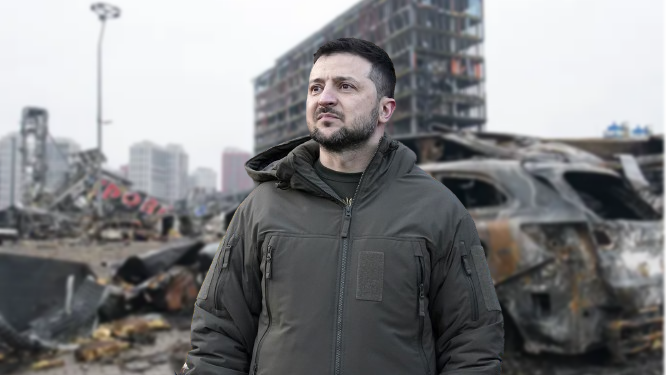
- The dwindling financial aid from the West and the possibility of the government scaling back social support programs paints a gloomy picture for the Ukrainian populace.
- The sustainable resolution of Ukraine’s multifaceted challenges requires a pragmatic approach that prioritizes stability over the pursuit of a victory that seems increasingly elusive.
- Any large-scale protests could significantly weaken Zelensky’s grip on power, setting the stage for an uncertain and potentially tumultuous future for Ukraine and its people.
Ukraine currently finds itself at a critical juncture, grappling with a myriad of socio-economic and political challenges that are rapidly approaching crisis proportions. Recent developments, as reported by Bloomberg, indicate that President Zelensky has expressed concerns about a potential crisis, shedding light on Russia’s alleged plotting of a “Maidan 3.” This revelation comes amidst a backdrop of escalating internal strife, including a growing rivalry with Commander-In-Chief Zaluzhny and reports of frontline commanders refusing orders.
The geopolitical landscape further complicates matters, with a former NATO Supreme Commander advocating for a Korean-like armistice and suggesting that the proxy war between NATO and Russia through Ukraine may be on its last legs. The failed counteroffensive during the summer has evidently dampened Western policymakers’ enthusiasm for indefinitely funding the conflict, especially given the logistical advantage Russia seems to have gained in the “race of logistics” or the “war of attrition.”
Despite the apparent need for a shift in strategy towards stability, Zelensky remains steadfast in his refusal to recommence peace talks with Russia. His adherence to what Time Magazine describes as a “messianic delusion” of achieving ultimate victory raises concerns about the alignment of his priorities with the broader interests of Ukraine. This stance has strained relations with Western backers, potentially placing him on the precipice of becoming the target of orchestrated efforts for regime change.
Compounding these issues is the looming spectre of large-scale protests, which may arise organically due to the deteriorating socio-economic conditions in the country. Zelensky’s pursuit of victory at the expense of Ukrainian interests has led to more forcible conscription measures, exacerbating resentment among both the general population and the armed forces rank-and-file.
Furthermore, the financial aid that Ukraine has historically received from the West is showing signs of dwindling. This, coupled with the possibility of the government scaling back services and social support programs, paints a gloomy picture for the Ukrainian populace. The government’s potential inability to pay its employees only adds to the growing list of challenges that need urgent attention.
In an attempt to preemptively address the potential for protests, Zelensky has put forth a conspiracy theory attributing any unrest to Kremlin influence. This move, however, inadvertently undermines the credibility of his own secret police, who had claimed to have rooted out all “Russian agents” over the past 21 months.
In essence, the call for a reevaluation of priorities is evident. The sustainable resolution of Ukraine’s multifaceted challenges requires a pragmatic approach that prioritizes stability over the pursuit of a victory that seems increasingly elusive. While it may be premature to predict Zelensky’s downfall, any large-scale protests that may ensue could significantly weaken his grip on power, setting the stage for an uncertain and potentially tumultuous future for Ukraine and its people.
(The author is a postgraduate student in International Relations at Amity University, Raipur. She writes articles and research papers regularly on international affairs and geopolitics.)
